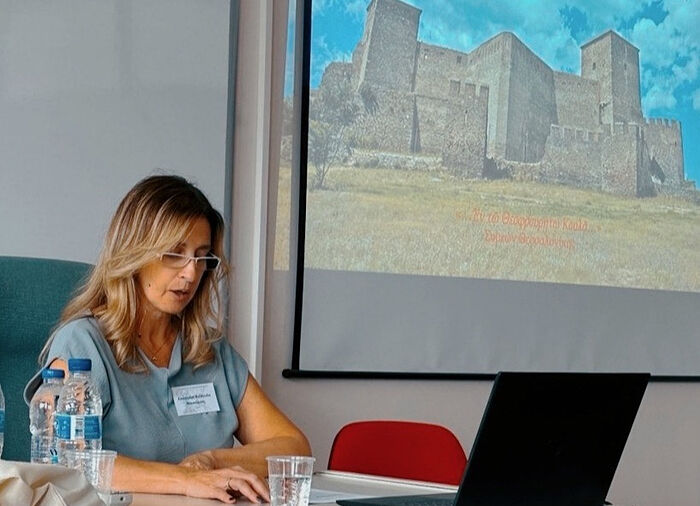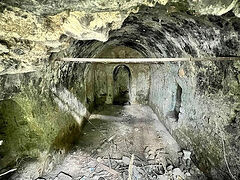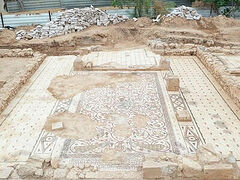Thessaloniki, October 2, 2023
An unknown Byzantine church from the Palaiologan period and a cemetery from the same era were found near the main “gate” of Thessaloniki, very close to the walls of the Acropolis, during the emergency excavation of the plot.
The unique and extremely rare finding was announced by archaeologists Ekaterini Kousoula, Anstasia Linda, and Charilaos Goudis at a conference attended by Greek Byzantinologists in Komotini, reports the Orthodoxia News Agency.
According to the experts, the eastern part of the holy church, wall paintings, a cemetery with approximately 60 graves, and numerous coins aiding the church’s dating were revealed.
The wall was preserved to a sufficient height, with part of the iconography well preserved. In particular, the lower section of the Extreme Humility of Christ survived, with the fingers of the Lord’s crucified hands, part of His forearms, and His body visible.
In the arch of the sanctuary, a Melisomos fresco depicting the cutting of the Eucharistic bread has been preserved, showing hierarchs in elaborate vestments and angels richly adorned.
Many fragments of wall paintings were also uncovered, from which it was possible to reconstruct the image of the Platytera—a masterpiece from the second decade of the 14th century.
Near the painted wall of the conch, the Holy Table itself was discovered.
The cemetery of the Palaiologan period with dozens of graves and tombs adds to the unique findings. No other cemetery of such a size is known within the Acropolis.
Based on the overall archaeological picture and the numismatic evidence from the graves and the building that included Latin imitations and coins of Michael VIII Palaiologos (1261-1281), it can be inferred that the cemetery and the church were established around the mid-13th century.
However, this initial building was destroyed and experienced a second construction phase in the early 14th century. Yet this church in its second phase also didn't have a particularly long life, as coins and pottery reveal its radical destruction and burial around the early 15th century, during the troubled times when Byzantine despots and Ottoman Sultans successively conquered Thessaloniki until its final fall to the latter.
Follow OrthoChristian on Twitter, Vkontakte, Telegram, WhatsApp, MeWe, and Gab!




